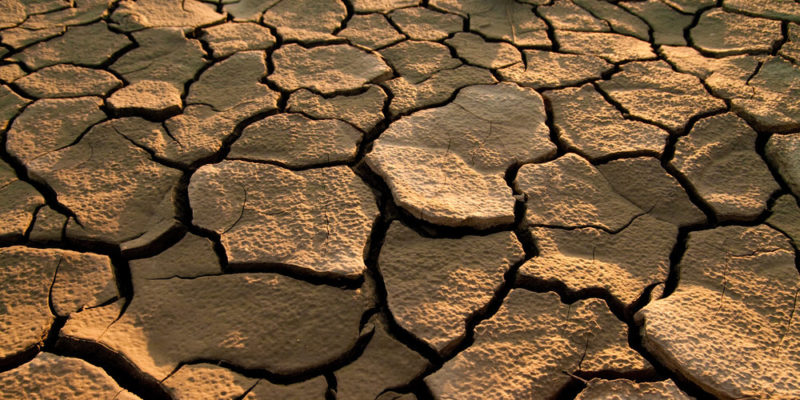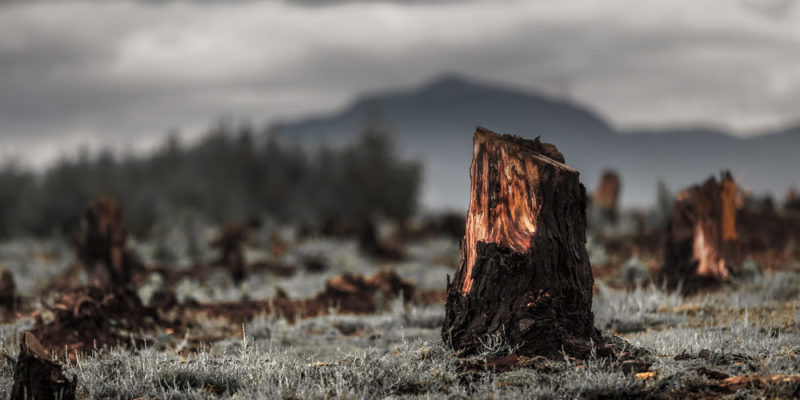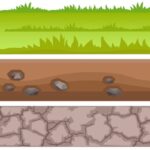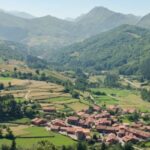We explain what soil erosion is, how it is classified and what its causes are. Also, its consequences and how to avoid it.

What is soil erosion?
Soil erosion is the process of wear and tear of the earth's surface as a consequence of the impact of geological actions (such as water currents or melting ice), climatic actions (such as rain or intense winds) or human activity (such as agriculture, deforestation, expansion of cities, among others). ).
Soil erosion is a discontinuous and slow phenomenon that consists of the mobilization of landslides from the surface and that, in the long term, generates changes in the appearance of the land. There are cases in which erosion occurs rapidly due to natural disasters or excessive human actions, which causes soil degradation with loss of organic matter and minerals.
See also: Earthquake
Types of soil erosion

There are three main types of natural soil erosion:
- Water erosion It is produced by the passage of water flow that can be rainwater or river.
- Wind erosion It is caused by the wind that blows strongly.
- Gravitational erosion It is produced by the action of gravity when rocks fall or glaciers melt from the top of a slope.
There is another type of soil erosion that occurs more rapidly:
- Anthropic erosion It is produced by human activity that impacts the wear and deterioration of the soil, such as, for example, intensive agriculture, deforestation, the construction of canals and roads, the expansion of urban areas, intensive livestock farming, mining, among the main ones.
Causes of soil erosion

The causes of soil erosion can be diverse and the main ones include:
- The movement of water In the form of rain, rivers or marine currents, water hits the ground and detaches part of the surface, which is carried away by the current.
- The movement of the wind The blow of strong winds against the ground releases particles and remains from the surface (in the form of dust, sand or rocks) and moves them.
- The movement of rocks and glaciers The release of ice from glaciers or rocks that come down from the top of a slope causes wear or cracks in its wake.
- Exposure to extreme temperatures Climatic conditions of extreme heat or cold that occur for a long time alter the surface of the soil and cause cracks or breaks that facilitate its wear.
- The use and abuse of the earth by humans Excessive human activity, such as intensive agriculture or the construction of urban areas, causes soil deterioration, in many cases, with irreversible damage.
Consequences of soil erosion
The main consequences of soil erosion due to human actions involve:
- The loss of fertile land yield for the sustainability of agricultural ecosystems and for land productivity.
- The increase in pollution and sedimentation of streams and rivers causes the decline of the species that live there.
- Soil desertification turns the land into an arid area or one not suitable for life (due to lack of water, vegetation and food).
- The reduction in filtering capacity in desertified soils can generate flooding in the area.
- The imbalance of the ecosystem generates loss of biodiversity, that is, of animal and plant populations.
- The global climate is altered, to a large extent, by the reduction of forests that have the capacity to absorb carbon dioxide.
How to avoid soil erosion?

To avoid soil erosion and wear due to human actions, the best solution is prevention and the development of activities such as:
- Sustainable land use It can help reduce the impacts of agriculture and livestock, and prevent soil degradation due to nutrient loss.
- Reforestation Planting trees and plants favors the restoration of ecosystems and the maintenance of the soil.
- Planting vegetation Promoting sustainable planting in exposed territories or areas where construction machinery was deployed helps to stabilize the land and its nutrients.
- The construction of drainage channels In areas where the soil has little absorption capacity, drains can help channel water to prevent flooding.
Deforestation and soil erosion

Deforestation is the action caused by humans that consists of clearing forests and jungles by cutting down or burning. If this action is carried out intensively and is not followed by adequate reforestation practice, it generates serious damage to the soil and the ecosystem, including:
- The loss of habitat for millions of animal and plant species It is the most dramatic impact because living beings cannot survive the destruction of their environment.
- Climate change The indiscriminate felling of trees alters climatic conditions, because they protect the soil and maintain the humidity of the environment and the hydrological cycle that returns vapor to the atmosphere.
- A greater greenhouse effect In addition to intervening in the climate, trees absorb the gases that cause global warming. Its absence, due to indiscriminate logging, alters the concentration of gases in the atmosphere.
Vegetation maintains the properties of the soil, prevents erosion, occupies a key place in the water cycle – and consequently in the climate – and conserves biodiversity. Therefore, to maintain the harmony of the ecosystem, the care and maintenance of the soil is essential.
References
- “Soil Erosion and Degradation” in World Wild Life.
- «Types of Soil Erosion» in Monographs.
- «Deforestation» in World Wild Life.
- “Deforestation” in National Geographic.





